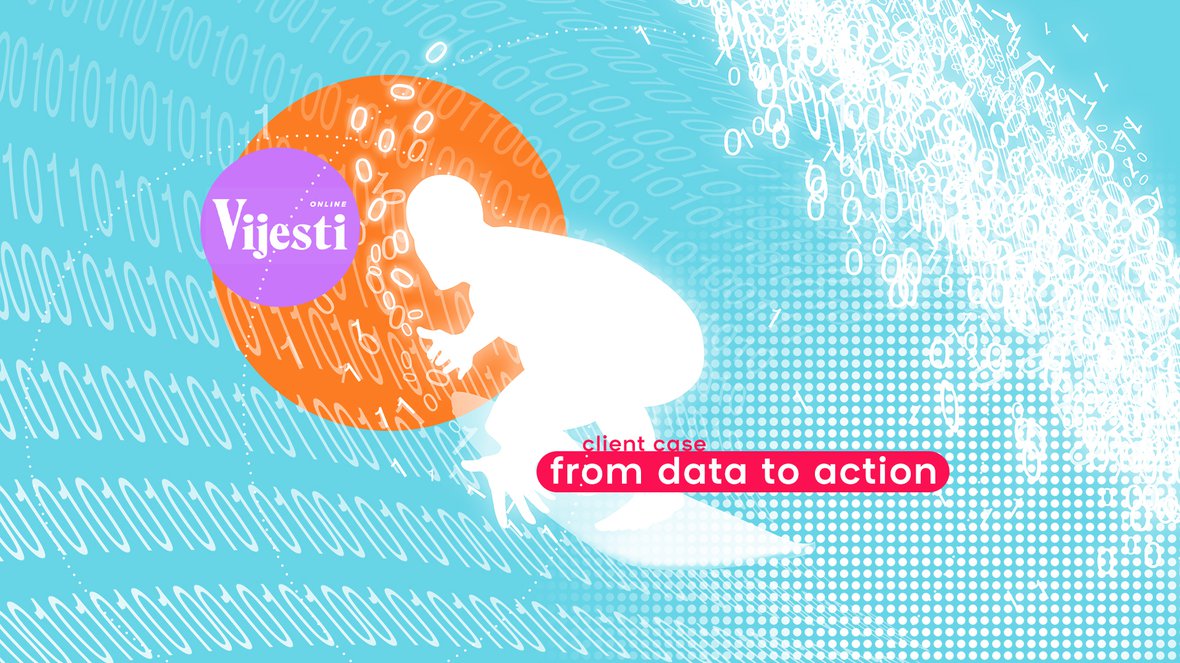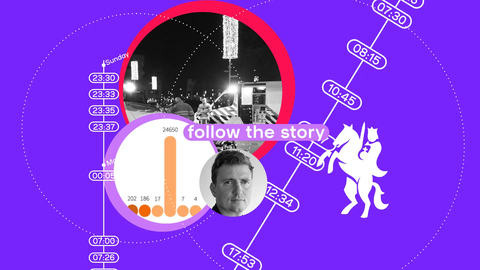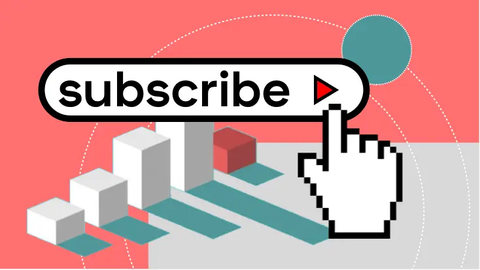In 2021, Vijesti partnered with Internews, an organisation that creates projects and identifies funding opportunities for media outlets. For Vijesti, this provided a timely opportunity to gain access and support as it moved into the next, more digital phase of its life. And, as analytics play such a key role in this transition, we at smartocto were delighted to work alongside Filip Ivanovic, their digital development director, to help them begin this transition.
Vijesti x Internews: shifting to a data-informed approach
April 7, 2022 by Em Kuntze

About Vijesti
Vijesti is a news organisation based in Montenegro - and the only independent media. Since its founding in 1997, the publisher has grown its reach and stature, launching TV in 2008 and its own portal in 2011.
In 2020 they generated an impressive 500k unique visitors a month - not bad at all for a country with a population of just 650k.
They are renowned for their public-service approach to news and are typical of news organisations in the region that have struggled against immense political and economic pressure since its founding.
Some extra background info:
- Newspaper was founded 24 years ago, in 1997.
- TV since 2008
- Portal since 2011
- Investigative journalism has won 30+ awards
- Rough data identifies 2 million users per month
- 500k unique visitors per month
- Core audience 25-65
- 100 staff; 50 working in editorial
The power of Vijesti is that whenever something happens people don’t believe it until we confirm it or print it. We’re trusted.

Filip Ivanovic Digital Director @ Vijesti
Challenges & life before the project
Vijesti’s challenges are almost universally recognisable. Print has long been a core part of the business and the shift to digital presents the now-familiar issues of cultural change, upskilling and strategic shift.
The business model is of course at the heart of this. Like so many media houses in a similar position, subscriptions will start to form a key part of Vijesti’s business model, but before that can happen, naturally, they need to understand the following:
- True engagement levels of its readership
- Consumption patterns and reader behaviour
- The optimal subscription offer and positioning
So, the obvious question was, why weren’t they getting this information already?
Of course we had access to Google Analytics and other tools, but these were quantitative - and the questions we had needed a qualitative approach to get the answers that would be useful to us.

Filip Ivanovic Digital Director @ Vijesti
In fact, Vijesti gets extra brownie points for having a data team already in place, particularly one with such keen and curious minds as that of Filip and Aleksandra Gačević, their data analyst. The issue facing the company was how to get the data into the newsroom, where it could be acted upon.
As is typical of print-centric publishers, sometimes it can be difficult to effectively integrate data into the newsroom workflow. Whether it is reticence, scepticism or mistrust, there’s often a resistance to bringing data to the editorial table. Vijesti has a dedicated team whose job is to undertake this kind of data analysis, but really it doesn’t matter who is doing the heavy lifting: ultimately the findings must end up in the conversations in the newsroom itself.
The project offered Vijesti:
- Mentor with a consultant from Internews
- Access and training for the smartocto Insights tool
- Regular 1:1 training sessions with the smartocto success team
- Data onboarding
- Consultation about needs, expectations, strategy
Goals and focus for growth
Filip identified three areas for development that he hoped would be addressed over the course of the project.
- Understand content performance better
- Boost subscriptions when they start
- Get more print journalists working digitally
Points two and three here are longer-term goals (subscriptions are yet to be launched), but really that first area underpins both.
There’s a lot of truth in the adage that you can’t manage what you don’t measure. Subscriptions, for starters, succeed or fail with the understanding that the publisher has about audience needs and behaviours. And how journalists respond to that information can be seismically impactful.
Learnings
When Filip talks about if and how this project has been useful, there is a phrase he uses again and again: cross-analysis.
Comparing different metrics against one another gradually enables any user of an analytics system to hone their understanding to a finer and finer point, and so it has been the case for Filip:
“We have spent a lot of time looking at author metrics, but I’ve been fascinated by Read Depth in particular. Basically, we want to see what’s generating the most genuine engagement, how users are reacting and behaving. With this information, we can create more of the same, or create more of what these readers might want to read next”
-------------------------------------------
Read Depth - a metric to identify how far through an article a reader gets before clicking away. It may surprise those unfamiliar with data to know that the average is around 47%
CPI - smartocto’s unique single metric. Articles, authors or sections are given a score 0-1000, with 500 being average. This figure is based on the relationship between multiple analytics and shows at a glance how an article, section or author is performing against others on site.
-------------------------------------------
Part of the concern for newsrooms is that data might somehow undermine experience or gut instinct. This, combined with the move to digital has meant that editorial staff have been typically slow to adopt a data-informed approach to their work. This isn’t unique to Vijesti: it’s common across the entire sector, irrespective of locale.
And, the knock-on effect of this is that unless management is on board, all the numbers in the world can mean nothing.
This is why Filip is a huge fan of the reports that he set up during the project. Customisable reports sent at whatever interval best suits your organisation can be transformative, and are an ideal opportunity to bring digestible information to the editorial staff. While these reports might have been sent solely to the editor in chief, Filip is now working with the 6 section editors in the same way. Each can be given information that’s relevant and actionable to each particular team. As the data flows, so too - the theory goes - will data literacy.
“This kind of data is really important. Subscription ideas that we’ve had were based on assumptions - with this we’ll be able to analyse performance in a more meaningful way that can have real positive business impact.”
Three tips for adopting a more data-rich approach
And what would Filip say to his fellow colleagues who are doing the hard work of making data seem easy-breezy? These are some tips.
1. “Create reports immediately. They’ll make your life easier”
These at-a-glance reports are invaluable, and they should take next to no time to set up. Because they’re entirely customisable, you can work with the interest, capacity and competency levels of the intended recipients - thus alleviating data-shock.
2. “Set clear goals or editorial KPIs. And be specific: vague isn’t helpful”
The answers you give are only ever as complete as the questions you ask are specific.
3. “Use visualisation wherever you can. It really helps less data-interested colleagues engage”
Big screens are commonplace in newsrooms, but are commonly the repository for only very minimal information. By judicious use of what goes on them, you can actually create a positive, passive influence on how your team views data - just as Filip has. They’re a passive data influence and have the potential to seamlessly weave the data web into the newsroom.
So, finally, how does Filip see the role of data in the newsroom evolving in the future?
Of course, every journalist should have this information and look into it, but initially weekly reports are incredibly useful. They show just enough to be relevant and relax them into this approach - it shows them that data isn’t bad. It’s not trying to override their experience.

Filip Ivanovic Digital Director @ Vijesti
you may also like...
Follow the story
We followed a story completely from A to Z to understand exactly what happened, how the story was monitored in smartocto, to what suggestions and smart notifications it led, how these tips were followed up, what the newsroom was doing during this whole period and what the learnings are.

Growing your subscriber base with engaging content
In this client case we will dive into the way smartocto helps Badische Zeitung to recognise and understand the most engaging (and therefore most valuable) content on its pages.
